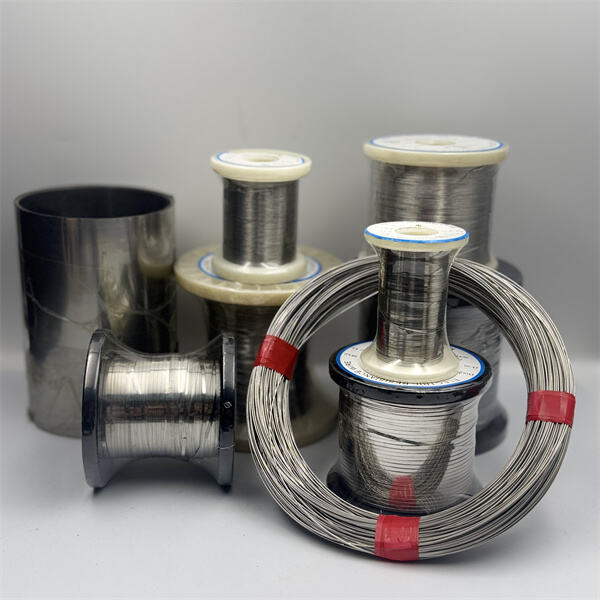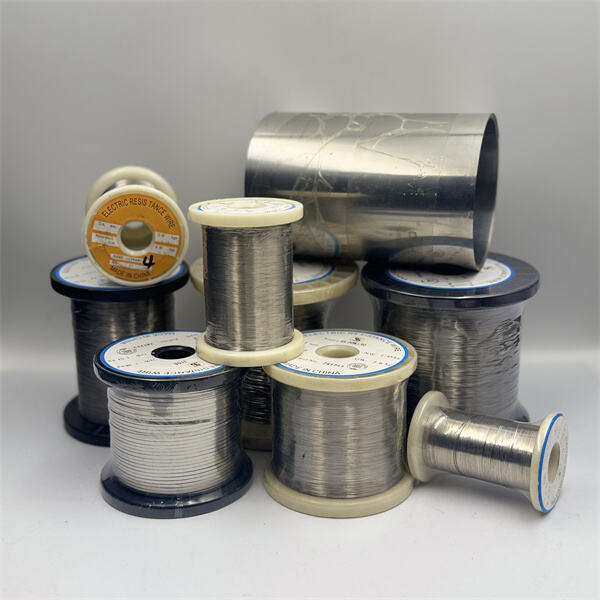Làm dây cáp kết nối thế giới.
Bạn có bao giờ thắc mắc tại sao dây điện làm bằng kim loại lại cản trở dòng điện không? Điều này là do một hiện tượng gọi là điện trở. Điện trở là thước đo mức độ khó khăn mà dòng điện phải đối mặt khi chảy qua một chất dẫn. Hãy tưởng tượng việc đẩy một chiếc xe đồ chơi trên cát so với việc đẩy nó trên sàn nhà lát gạch. Sự cản trở của cát khiến xe khó di chuyển, giống như điện trở tạo ra một con đường khó đi cho dòng điện. Độ điện trở của dây kim loại cũng có thể khác nhau dựa trên các yếu tố khác. Chiều dài và độ dày của dây, cũng như loại kim loại mà dây được làm từ, là hai trong số những yếu tố đó.
Một trong những yếu tố chính ảnh hưởng đến điện trở của dây là nhiệt độ. Khi dây kim loại nóng hơn, mức điện trở sẽ tăng lên, điều này khiến dòng điện di chuyển bên trong nó trở nên khó khăn hơn. Điều này xảy ra vì nhiệt độ cao làm cho các nguyên tử trong dây rung động mạnh hơn. Nhưng khi bạn nhảy nhót xung quanh, việc bạn bè ném bóng cho bạn có thể trở nên khó khăn hơn. Khi các nguyên tử di chuyển, chúng cản trở các electron đang di chuyển qua dây, tạo ra nhiều điện trở hơn.

Điện trở của dây chủ yếu phụ thuộc vào chiều dài và độ dày của dây. Một cách diễn đạt khác: dây dài có điện trở lớn hơn dây ngắn. Điều này là vì, giống như khi chạy đua, dòng điện phải đi qua một khoảng cách xa hơn trong dây. Khoảng cách xa cần sử dụng nhiều năng lượng và thời gian hơn để vượt qua so với khoảng cách gần. Giống như dây dày có khả năng mang dòng điện lớn hơn so với dây mỏng. Ví dụ, bạn có thể cho rằng con đường rộng sẽ chứa được nhiều xe hơi cùng lúc, giống như dây dày, trong khi con đường hẹp chỉ chứa được ít xe như dây mỏng. Hiểu về cách chiều dài và độ dày của dây ảnh hưởng đến điện trở sẽ giúp chúng ta chọn dây phù hợp cho mọi công việc hoặc ứng dụng.

Điều này cũng khác nhau giữa hai vật liệu - khả năng chống lại dòng điện. Do đó, việc chọn một vật liệu phù hợp cho dây dẫn sao cho điều chỉnh được điện trở là rất cần thiết. Ví dụ, các kim loại như đồng và nhôm có điện trở rất thấp, nghĩa là điện có thể lưu thông dễ dàng qua chúng. Tuy nhiên, một số kim loại như wolfram và niken làm cho dòng điện khó đi qua hơn; chúng có tính kháng cao hơn. Đồng thường được sử dụng trong hầu hết các công việc điện vì nó có điện trở thấp và là tốt nhất để dẫn điện.

Các sản phẩm hữu ích cho việc đo lường chính xác Dây điện trở . Các công cụ rất phổ biến được biết đến với tên là đồng hồ đa năng. Thiết bị hữu ích này có khả năng đo cả dòng điện chạy qua dây và điện áp trên dây. Nó đo điện trở của dây bằng cách sử dụng dòng điện và đo trực tiếp điện áp, sau đó áp dụng một số phép tính đơn giản. Phương pháp khác được biết đến là định luật Ôm; người ta có thể đo dòng điện và điện áp rồi chia điện áp cho dòng điện để tìm ra điện trở. Cùng với các dụng cụ khác có thể hữu ích, còn có hộp điện trở và cầu Wheatstone.
Công ty TNHH Vật Liệu Hợp Kim Nhiệt TS được trang bị công nghệ tiên tiến, bao gồm máy kéo dây, lò nhiệt luyện và máy đóng gói. Điều này đảm bảo rằng mọi sản phẩm, từ nguyên liệu thô đến sản phẩm hoàn thiện, đều đáp ứng các tiêu chuẩn chất lượng nghiêm ngặt. Các quy trình sản xuất của công ty được thiết kế để đạt độ chính xác và tin cậy cao, cho phép sản xuất các dây điện trở chất lượng cao và cáp thép. Dù là dây Fe-Cr-Al hay Ni-Cr, các sản phẩm của chúng tôi đều được chế tạo với sự chăm sóc và chuyên môn, đảm bảo hiệu suất tối ưu trong nhiều ứng dụng công nghiệp khác nhau.
Với hàng chục loại vật liệu có sẵn, TS Heating Alloy Materials Co., Ltd cung cấp một phạm vi rộng các sản phẩm dây điện trở và cáp thép. Sự đa dạng này đảm bảo rằng chúng tôi đáp ứng được các nhu cầu cụ thể của nhiều ngành công nghiệp khác nhau, từ xây dựng đến các lĩnh vực chuyên biệt yêu cầu dây cáp điện trở. Khả năng cung cấp cả giải pháp tiêu chuẩn và theo đặt hàng khiến chúng tôi trở thành điểm đến duy nhất cho các doanh nghiệp trên toàn thế giới, mang lại tính linh hoạt và khả năng thích ứng với các nhu cầu thị trường khác nhau.
Tọa lạc tại Thái Châu, Giang Tô, Trung Quốc, Công ty TNHH Vật liệu Hợp kim Sưởi ấm TS受益 từ vị trí gần Cảng Thượng Hải, một trong những trung tâm vận tải biển bận rộn nhất thế giới. Vị trí chiến lược này giúp việc vận chuyển quốc tế được hiệu quả, cho phép chúng tôi cung cấp dịch vụ giao hàng kịp thời đến các thị trường trên khắp châu Á, châu Âu, Bắc Mỹ và châu Phi. Khả năng logistics của chúng tôi đảm bảo rằng chúng tôi có thể đáp ứng nhu cầu toàn cầu nhanh chóng và đáng tin cậy, làm cho chúng tôi trở thành đối tác lý tưởng cho các công ty đang tìm kiếm sản phẩm dây hợp kim chất lượng cao với thời gian hoàn thành nhanh.
Kể từ khi thành lập vào năm 2023, Công ty TNHH Vật liệu Hợp kim Luyện kim TS đã mở rộng dấu chân quốc tế thông qua các đối tác thương mại mạnh mẽ. Sản phẩm của chúng tôi hiện đã được xuất khẩu thành công đến các khu vực như Nhật Bản, Hàn Quốc, Đông Nam Á, châu Âu và châu Phi, với trọng tâm là xây dựng các mối quan hệ lâu dài. Bằng cách tiếp tục phát triển thương hiệu Hợp kim Luyện kim TS trên toàn cầu, chúng tôi hướng tới việc tăng cường sự công nhận và mở rộng sự hiện diện trên các thị trường quốc tế, cung cấp vật liệu hợp kim hiệu suất cao cho khách hàng trên toàn thế giới. Bốn điểm nổi bật này thể hiện những thế mạnh của Công ty TNHH Vật liệu Hợp kim Luyện kim TS, cho thấy cam kết về chất lượng, dịch vụ khách hàng và mở rộng toàn cầu của công ty.